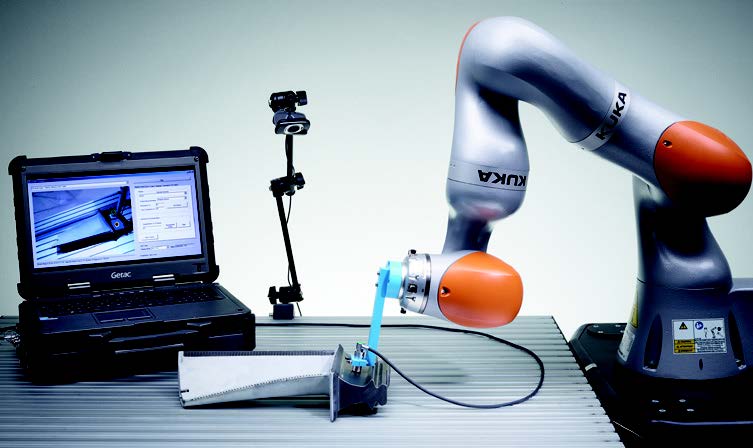Quality and Reliability, Sensors and Sensor Systems
Looking inside materials the smart way
Aircraft, trains, and power plants have to be inspected regularly. Detecting damage too late could pose safety risks, and time-consuming repair work results in expensive downtimes. Researchers at Fraunhofer IZFP are making complicated testing work easier with the sensor and inspection system 3D-SmartInspect.
The condition of safety-critical objects – turbines, generators or high-pressure containers, for example – have to be examined regularly. This has previously been performed manually. To this end, the inspectors check the entire surface using a sensor device – a task that requires a lengthy training process and a great deal of experience. But even then, inspectors may miss a spot.
Recording 100 percent of the data
Researchers at the Fraunhofer Institute for Nondestructive Testing IZFP have, in “3DSmartInspect – Intelligence in Inspection and Quality Control”, developed an inspection system that supports inspectors in their difficult task. The system shows at a glance which points have already been measured and what the result of the measurement was, and then generates a log that is available immediately in digital form. The inspectors can wear augmented reality (AR) glasses, though the system works with a tablet PC or a smartphone too. The employee can view the object to be examined – let’s take the high-pressure container again – through the glasses. As the inspectors run the sensor over the object, the corresponding area on the glasses’ display changes to green while the rest of the container retains its original color. This assures inspectors that they have examined every inch of the object. At the same time, the system constantly verifies that the sensor data has been recorded correctly. Once all data has been acquired, inspectors can see the results immediately. Areas with any kind of a defect – a cavity where it does not belong, or corrosion – appear red on the display. Inspectors can immediately indicate where the repair team needs to intervene, either by using chalk on the actual object or via digital means. Control center experts can also examine all the data as soon as it has been collected and can decide immediately how urgently the repair needs to be carried out.
Digital testing memory
Generating a test protocol will also be much simpler. Currently, inspectors have to laboriously document their work and then allocate the data to the object measured – a method prone to errors. With 3D-Smart- Inspect, data is automatically and clearly assigned to the object and writing a protocol is unnecessary. Digital approaches such as these offer enormous economic advantages because they significantly reduce – if not completely eliminate – downtimes. Another advantage is that the use of 3D-SmartInspect would, in the future, allow less experienced inspectors to carry out the complex measurements by themselves, and would also significantly reduce the training time required. The Saarbrücken-based researchers already presented an initial prototype of 3D-SmartInspect at this year’s Hannover Messe trade fair.
Last modified:

